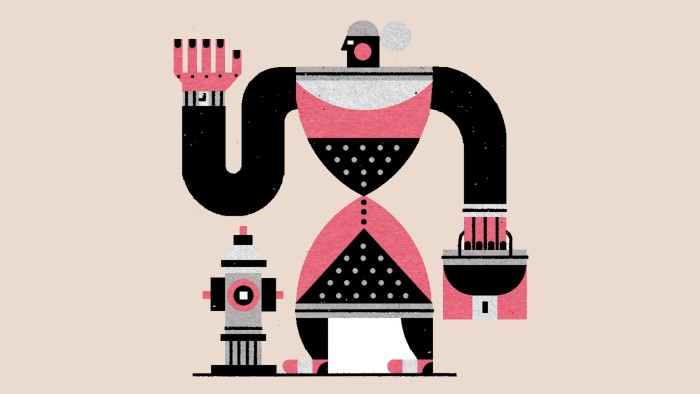What makes life sag in the middle?

Roula Khalaf, Editor of the FT, selects her favourite stories in this weekly newsletter.
A few weeks ago, the lazier end of the UK newspaper market published “research” into the tell-tale signs of a midlife crisis, which apparently include anything from taking vitamins to looking up old flames on Facebook. The FT’s science editor, Clive Cookson, somehow neglected to report the story, perhaps because it was a predictable confection scraped together by a publicity-hungry hair restoration clinic.
I have paid more attention than usual to midlife research of late: after a long and happy partnership, this week my thirties and I will wave each other goodbye. I haven’t been taking vitamins, and I won’t be drawn on the subject of Facebook. But I am curious about the midlife crisis because, PR-driven nonsense notwithstanding, intriguing research is emerging around a topic often treated as a joke.
Economists who study happiness – or, to give it its academically preferred name, “subjective wellbeing” – have long been aware of a U-shaped pattern as people pass through different ages. We are, on average, happier in our teens and in early adulthood, and as pensioners, than we are in middle age.
Each individual is unique, but the average relationship between age and wellbeing is large. Wellbeing is often measured by asking people to evaluate their life satisfaction or overall happiness on a scale of 0 to 7. The middle-age trough is worth a good half-point fall on that scale, and only serious shocks such as unemployment or ill-health are larger.
There is an interesting methodological question here as to whether researchers should look for the midlife misery in the raw data, or after statistically adjusting for factors such as marital status and income. Are we saying “middle-aged people seem unhappy”, or “given that they tend to have stable relationships and high income, middle-aged people seem less happy than you would expect”? Andrew Oswald, a happiness researcher and professor of economics at the University of Warwick, has found the U-shape using both approaches.
What, then, is the explanation for midlife ennui? Elliot Jaques, a psychologist often credited with coining the term “midlife crisis”, attributed it to “the adult encounter with the conception of life to be lived in the setting of an approaching personal death”. But that is not the only explanation.
A new working paper by Hannes Schwandt of Princeton University proposes an intriguing possibility: the gloom of middle-age is what happens when high expectations are dashed. Using data from a large survey of Germans, Schwandt contrasts how, for example, a 25-year-old expects to feel at 30, with how she actually feels when 30 comes along. The pattern is striking: young people have vastly inflated expectations of their lives five years on. Expectations ebb as the years go by, although it is not until their early sixties that people start being pleasantly surprised by how life has turned out, relative to expectations five years previously.
This is intriguing stuff. Professor Oswald told me that it is rare for such a striking pattern to emerge from subjective wellbeing data. But it has its limits. For one thing, Schwandt’s data cannot show why we are disappointed. Did we expect sex, money and status that did not materialise – or were we just unimpressed with how sex, money and status made us feel?
There are other explanations of the midlife crisis. Perhaps it is neither about disappointment nor intimations of mortality. Although the U-curve afflicts men and women equally, perhaps there is something physiological, even hormonal, about it all. If that seems far-fetched, consider a remarkable recent study by a team including Professor Oswald, looking at captive orang-utans and chimpanzees, whose wellbeing is evaluated by their keepers. The finding? Middle-aged great apes seem to feel sad, too.
Tim Harford’s new book, ‘The Undercover Economist Strikes Back’, is published by Little, Brown
Comments